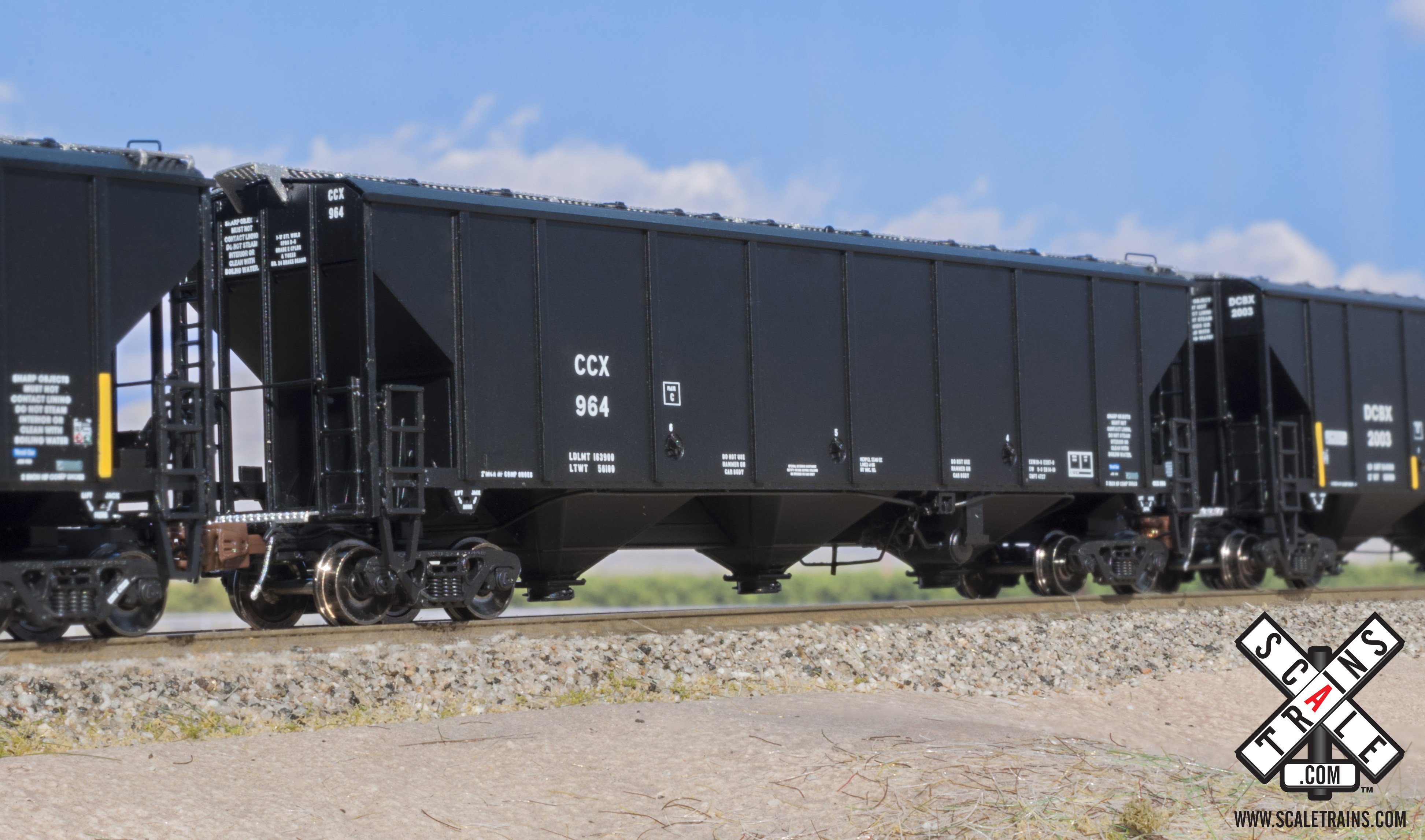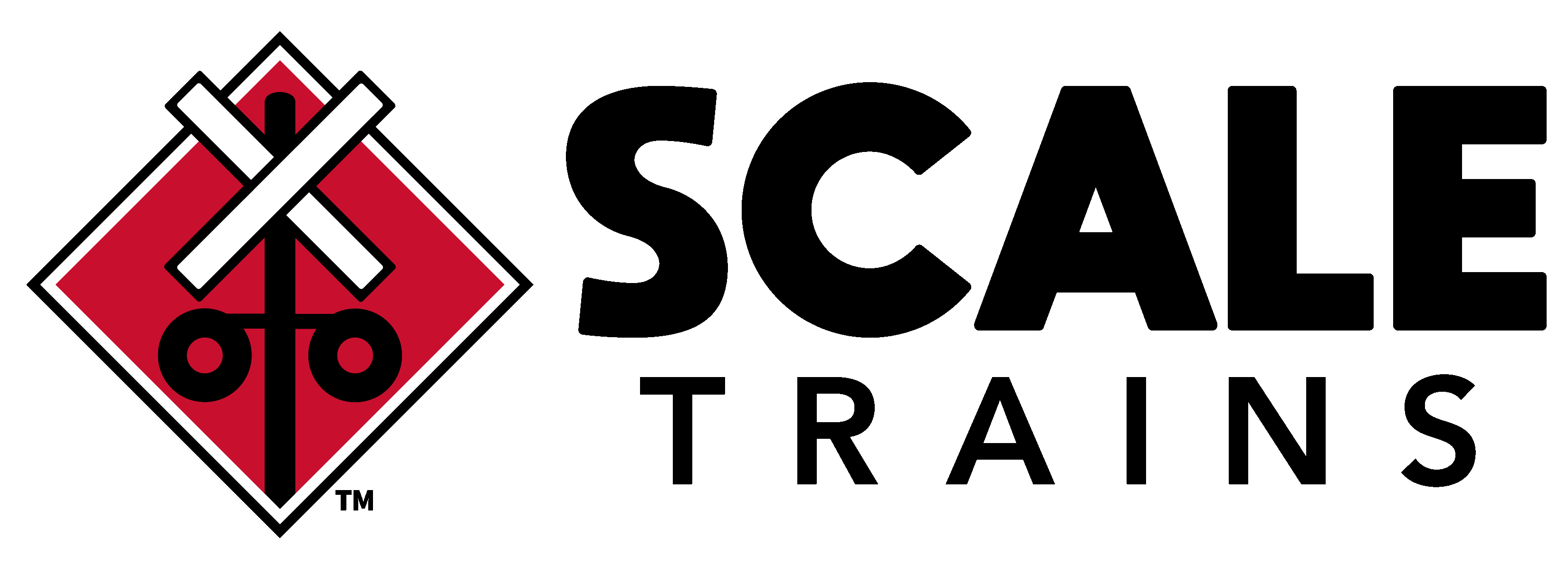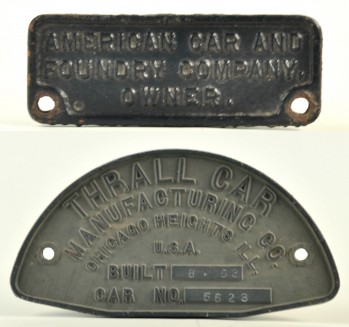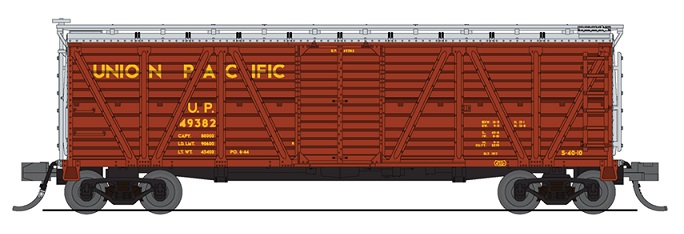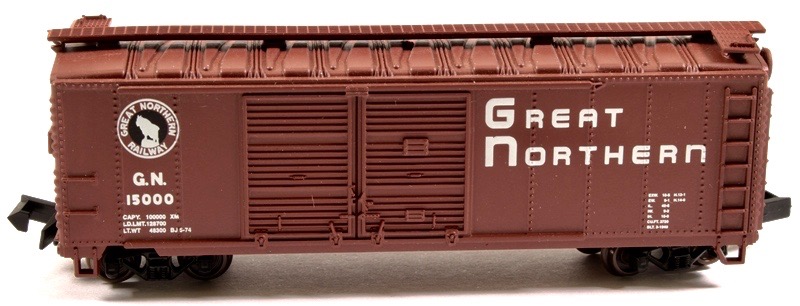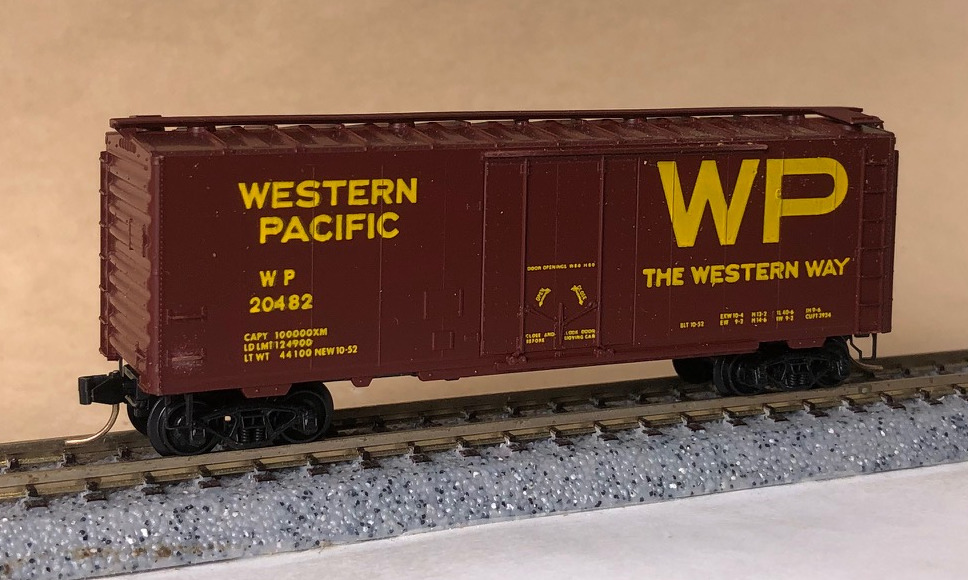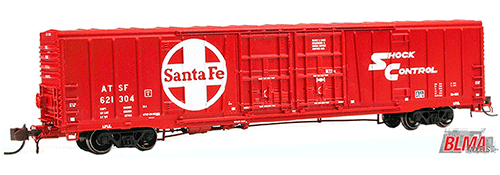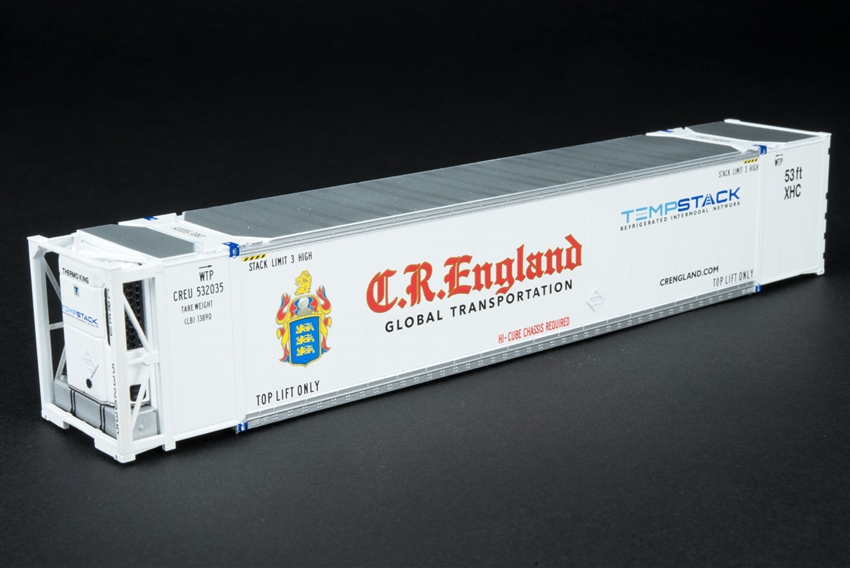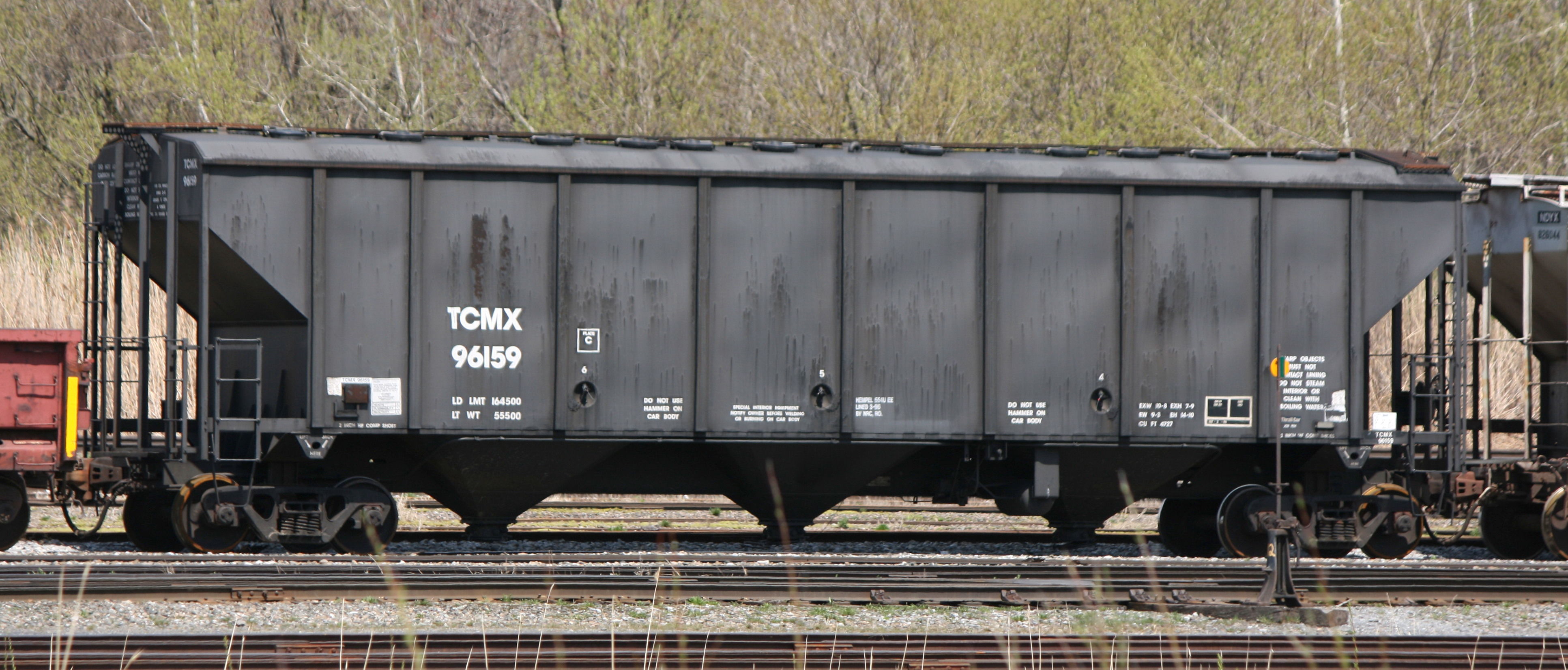Specific Item Information: From series CCX 959-1018, Thrall Car Job 911, built February-March 1996.
22 roof hatches.
Without FRA-224 reflective stripes.
Model Information: This model was announced by ScaleTrains.com in mid-2017 and first delivered in March of 2018. ScaleTrains.com is the first manufacturer to offer N Scale scale plastic models of contemporary Thrall 5750 cubic foot and Thrall 4727 cubic foot carbon black covered hoppers. The 4727 is appropriate for the 1990s to today. The prototype was painstakingly researched from field documentation, photographs, reference books, and builder drawings. A TroveStar review of this model can be found here.
Features: Per prototype: 22 or 28 roof hatches; Photo-etched stainless steel running boards and end platforms; Separately-applied ladders; Finely-detailed underbody brake detail; Body mounted semi-scale plastic Type E knuckle couplers; All-new Barber S-2 70-ton Trucks with finely rendered raised foundry data; 33” machined metal wheels; Coupler cut levers; Trainline hoses; Intricate brake plumbing; Color matched to Tru-Color Paint colors whenever possible; Printing and lettering legible even under magnification.
These cars operate with a minimum track radiusof 9 ¾”, but operate best when the track radius: 11” or more. The cars will operate on Code 55 and 70 rail.
Features: Per prototype: 22 or 28 roof hatches; Photo-etched stainless steel running boards and end platforms; Separately-applied ladders; Finely-detailed underbody brake detail; Body mounted semi-scale plastic Type E knuckle couplers; All-new Barber S-2 70-ton Trucks with finely rendered raised foundry data; 33” machined metal wheels; Coupler cut levers; Trainline hoses; Intricate brake plumbing; Color matched to Tru-Color Paint colors whenever possible; Printing and lettering legible even under magnification.
These cars operate with a minimum track radiusof 9 ¾”, but operate best when the track radius: 11” or more. The cars will operate on Code 55 and 70 rail.
Prototype History: Found throughout North America, these unique freight cars are commonly found in large groups near major carbon black producers or users. They can also be seen singularly or in small blocks of cars in mixed freight trains. Both prototypes were painstakingly researched from field documentation, photographs, reference books, and builder drawings.
In 1992, Thrall introduced the 4727 cubic foot carbon black covered hopper. In contrast with the boxy 5750cf design, this newer design more closely resembles traditional covered hoppers. Similar in appearance to “high-hip” grain hoppers, these cars featured three bays, external posts, and “open” ends with visible slope sheets. Common with their larger 5750cf cousins, these 70-ton cars feature “butterfly” outlets, multiple round loading hatches on the car roof (22 or 28 depending upon customer specifications), and sampling spigots mounted into small indents in the car sides. Many of these cars are still in service today.
A byproduct of the petrochemical refining industry, carbon black is a fine, powdery substance with a consistency sometimes described as being akin to soot. Deep black in color, one of its major consumers is the automotive industry, where it’s used as filler in tires, belts, and other rubber products. It also sees usage as a pigment in inks, paints, and plastic products, all of which make it a popular commodity with a variety of industries. Hauling it, however, can be challenging thanks to its physical properties. Covered hoppers are typically used to handle carbon black, with unique designs dating back to the 1920s. Reference: Carbon Black Cars: Freight Cars Journal Monograph #15 by Eric A. Neubauer, ISSN 0884-027X, 1990
In 1992, Thrall introduced the 4727 cubic foot carbon black covered hopper. In contrast with the boxy 5750cf design, this newer design more closely resembles traditional covered hoppers. Similar in appearance to “high-hip” grain hoppers, these cars featured three bays, external posts, and “open” ends with visible slope sheets. Common with their larger 5750cf cousins, these 70-ton cars feature “butterfly” outlets, multiple round loading hatches on the car roof (22 or 28 depending upon customer specifications), and sampling spigots mounted into small indents in the car sides. Many of these cars are still in service today.
A byproduct of the petrochemical refining industry, carbon black is a fine, powdery substance with a consistency sometimes described as being akin to soot. Deep black in color, one of its major consumers is the automotive industry, where it’s used as filler in tires, belts, and other rubber products. It also sees usage as a pigment in inks, paints, and plastic products, all of which make it a popular commodity with a variety of industries. Hauling it, however, can be challenging thanks to its physical properties. Covered hoppers are typically used to handle carbon black, with unique designs dating back to the 1920s. Reference: Carbon Black Cars: Freight Cars Journal Monograph #15 by Eric A. Neubauer, ISSN 0884-027X, 1990
Road Name History: Columbian Chemicals Co was founded in 1921 and is based in Marietta, Georgia with plants and sales offices in Centerville, Louisiana. As of 2011, Columbian Chemicals Company, Inc. operates as a subsidiary of Aditya Birla Management Corporation Pvt. Ltd, India, under the name Birla Carbon.
The company manufactures carbon black additives for rubber, plastic, liquid, and other industrial applications.
The company manufactures carbon black additives for rubber, plastic, liquid, and other industrial applications.
Brand/Importer Information: ScaleTrains.com, Inc. is an upstart HO and N Scale model manufacturer that was founded by a team with more than 125 years of accumulated experience in the model railroad hobby and industry.
ScaleTrains is specifically focused on the tiny details in the printing and quality of the construction. The four friends who founded the company are all avid modelers themselves. Their factory is located in Tennessee. Unlike most other companies, they offer a range of different levels of complexity in their offerings so as to be able to provide products for both the budget-conscious collector as well as the detail-focused model enthusiast without compromising on quality for either.
They range covers the following, by increasing level of detailing:
ScaleTrains is specifically focused on the tiny details in the printing and quality of the construction. The four friends who founded the company are all avid modelers themselves. Their factory is located in Tennessee. Unlike most other companies, they offer a range of different levels of complexity in their offerings so as to be able to provide products for both the budget-conscious collector as well as the detail-focused model enthusiast without compromising on quality for either.
They range covers the following, by increasing level of detailing:
- Operator™ trains are built for modelers who enjoy running high-quality, realistic trains at an affordable price. Designed from builder’s drawings and photographs, Operator models have fewer factory-applied parts and simplified printing. For added versatility, super-detail parts are available separately.
- The Rivet Counter™ line strives to create the most accurately detailed models imaginable. The real-world counterpart is meticulously researched to ensure prototype fidelity. Each model features numerous factory applied parts including roadname and road number specific details whenever possible.
- Museum Quality™ models are historically accurate replicas of the most famous locomotives in North American railroading history. Exhaustive research and a commitment to perfection combine to create the ultimate scale model. Museum Quality trains establish new standards which make them just as legendary as the original.
Item created by: gdm on 2018-03-13 11:36:37
If you see errors or missing data in this entry, please feel free to log in and edit it. Anyone with a Gmail account can log in instantly.
If you see errors or missing data in this entry, please feel free to log in and edit it. Anyone with a Gmail account can log in instantly.


